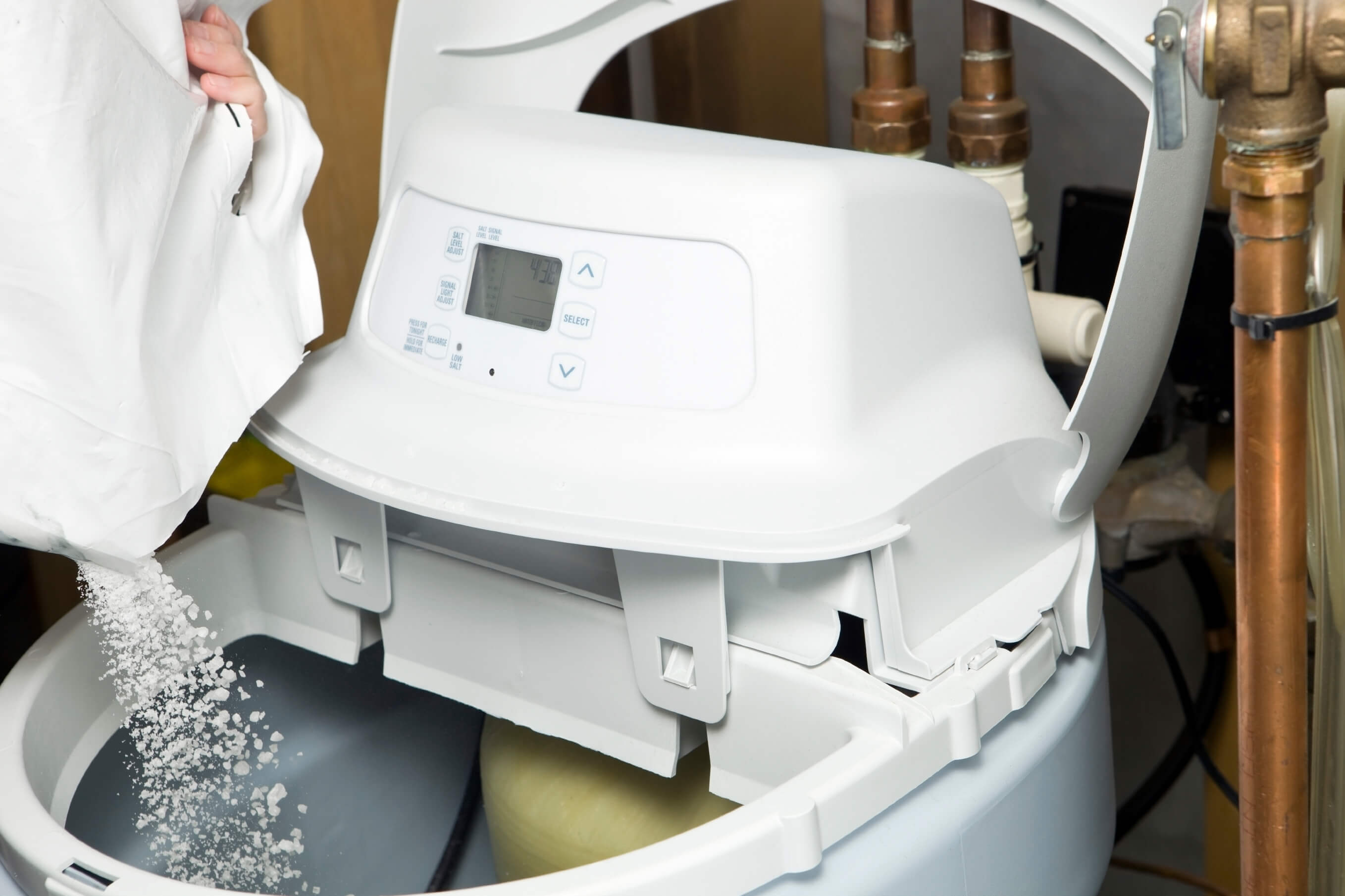
10 Nov The Water Softener System Basics
Before we go into all the details of water softener systems, we should probably answer the big question “what is a water softener?” A water softener is a machine that you connect to your water supply to get rid of all the hardness in your water. Hard water is what leaves the grime around water fixtures, causes water heating systems in your house to be less efficient, and leaves a slimy residue on your hair and skin.
Important Parts of a Water Softener System
Every machine has its important parts and water softeners are no different. The main parts that any consumer would want to make sure they know are:
- Resign beads
- Mineral tank
- Brine tank
- Control valve
- Distributor tube
Now we’ll just go in the order listed as well as the order they are used. The resign beads are the whole reason a water softener system works. They pull out the elements in the water that make it hard (magnesium and calcium) and replace it with sodium (salt).
Next there is the mineral tank where the actual switching of sodium and magnesium/calcium takes place. It can also be known as the conditioning tank. This is also where the resign beads go to get rid of the magnesium and calcium it took out of the water and stock up on more sodium to put in the water.
The brine tank is where an overly salty solution is prepared so that after the resign beads take the magnesium and calcium out of the water those beads go into the brine tank to once again become soaked in the sodium. In that process the magnesium and calcium that was pulled out of the water and onto the beads comes off and stays in the briny solution to be disposed of later.
When it comes to the control valve don’t think of water intake control, instead a water softener control valve is what tells the resign beads when it’s time to head over to the brine tank for a recharge.
Lastly we get to the distributor valve. Its whole purpose is to send the water out of the water softener system and off into the rest of the house.
Process of a Water Softener
The whole purpose of water softener is to get rid of the elements in your water that make it ‘hard’. The resign beads take the incoming hard water and force a switch the magnesium and calcium using the sodium covering the beads. Once switched the softened water simply continues on its way into the house. Those resign beads will eventually run out of sodium to switch. This is when the control valve initiates regeneration.
The regeneration cycle consists of three factors: backwash, recharge, and rinse. Backwash simply flushes out all the stuff that accumulates in the mineral/conditioning tank. When the system is recharging it is sending ‘brine’ or overly salty water to wash over the now magnesium/calcium soaked beads in order to make them pull off the magnesium and calcium and re-soaked them in sodium in order to be ready to soften more water. The rinse clears out the leftover magnesium, calcium, and brine from the brine tank. After the regeneration has completed its ready to go through and soften more water.
Main Types of Water Softeners
Differences in the types of water softener systems can be as simple and small as the brand or and big as one tank or two tanks. The most common and therefore the more popular system is an automatic regeneration system. Meaning that a timer keeps schedule of when the beads need to be recharged and rinsed. The one down side to it is that there is no soft water available during the recharging phase.
Another system is a sort of water meter that measures the water usage to know when to start regeneration. With this type of system it only has to be recharged when it’s actually needed. Also, only when it is equipped with two tanks is there a constant supply of softened water.
A third type of system is controlled by a computer. Throughout each day the computer monitors how much water is being used. Once a certain amount of water is used the computer triggers the regeneration cycle. Unlike the automatic regeneration and the water meter there is some soft water still available throughout the process but it is not limitless amounts only a reserve.
All of these systems are effective; it’s based more on preference. Another difference that applies to all systems is the capacity. Each of these different types of systems has the option of different capacities. The capacity of a water softener system is determined by the amount of grains (of sodium or potassium) you can put in it. Most systems have a capacity between 20,000 grains and 100,000 grains.
Benefits of a Water Softener
While there are countless benefits there are a few poignant ones. The biggest benefit that is universally acknowledged is how much money you save. Not only do you save on how much soap and detergent you have to buy, you save on how much energy you go through. The savings are enough to make up for the cost of the system.
Hard water makes it hard to clean anything it comes in contact with, all the soap scum and build up, clogged pipes and dingy clothes. Also hard water creates a type of film or coating over the water heating appliances and systems causing them to work harder, be less effective, and use more energy. With a water softener all this turns around for the better. Clothes are softer coming out of the washed, white fabrics stay white longer, less buildup in the pipes, and energy saved.
